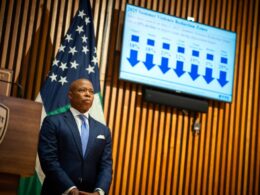Content oversight provided by Studio 1847
Recognition programs are now considered powerful tools for employee retention. Their use is supported by research from Gallup and Workhuman showing that well-recognized employees are 45% less likely to leave their jobs. This finding comes from a longitudinal study tracking 3,447 employees from 2022 to 2024, providing concrete evidence that strategic recognition directly impacts workforce stability.
The neuroscience behind this phenomenon involves dopamine, a neurotransmitter that plays an important role in motivation and reward processing. When employees receive meaningful recognition, their brains release dopamine, creating positive reinforcement loops that enhance engagement and commitment. The biochemical response transforms acknowledgment from a simple morale booster into a strategic retention tool.
The science of strategic recognition
Research reveals that effective workplace recognition must meet five essential pillars. It should be fulfilling, authentic, personalized, equitable and embedded in company culture. When recognition meets at least four of these criteria, employees are 65% less likely to actively seek new employment opportunities. This comprehensive approach to recognition creates lasting behavioral change, not just temporary satisfaction.
This observation is not only limited to individual retention. Organizations with recognition programs report 31% lower voluntary turnover rates compared to those without such programs. This reduction reflects significant cost savings, as replacing employees typically costs businesses more.
Dopamine serves as a prediction error signal, reinforcing behaviors that lead to positive outcomes. When employees receive recognition, dopamine reinforces the connection between their efforts and positive feedback, motivating continued high performance.
This neurochemical response explains why recognition programs create sustainable behavior change. The dopamine release associated with acknowledgment strengthens neural pathways that connect effort with reward, making employees more likely to repeat recognized behaviors. Organizations that understand this connection can design recognition programs that tap into natural motivational systems.
Building effective recognition systems
Companies implementing recognition programs see measurable improvements in multiple areas. Research shows that 90% of employees who receive recognition report increased motivation to put in extra effort. Additionally, among employees recognized monthly, 82% feel enthusiastic about their jobs compared to a significantly lower percentage among unrecognized workers.
Beyond retention, recognition programs drive productivity improvements. Studies indicate that recognized employees are five times more likely to feel valued, six times more likely to invest in their work and seven times more likely to stay with their employer for another year. These multiplier effects show how recognition creates cascading positive outcomes across the organization.
The business case for recognition investment
Organizations typically allocate only 0.3% of their payroll budget to recognition programs, significantly underinvesting in this powerful retention tool. Companies that increase recognition investment to 1% of payroll see dramatic improvements in retention and engagement metrics. This “tipping point” creates optimal conditions for recognition programs to generate maximum impact.
The return on investment proves substantial. Award-winning small businesses report 63% increases in income and 39% growth in sales, while large companies see 48% income increases and 37% sales growth. These financial benefits stem from improved employee performance, reduced turnover costs and enhanced customer satisfaction driven by engaged workers.
Implementation strategies for maximum impact
Successful recognition programs require systematic approaches rather than ad-hoc appreciation efforts. Companies should establish clear criteria for recognition, ensure consistency across departments and train managers to identify and acknowledge exceptional performance. Technology platforms can streamline recognition processes while maintaining the personal touch that makes acknowledgment meaningful.
Peer-to-peer recognition programs amplify the impact of traditional top-down approaches. When employees recognize each other’s contributions, it creates a culture of appreciation that extends beyond formal management recognition. This distributed model ensures that achievements at all levels receive acknowledgment, not just those visible to senior leadership. Human resources awards that celebrate exceptional HR contributions can inspire teams to pursue similar recognition opportunities.
The Global Recognition Awards is an example of how merit-based recognition systems can create a lasting impact. Their blockchain-verified credentials provide employees with tangible proof of their achievements, enhancing the dopamine effect through verifiable accomplishment. The organization’s rigorous evaluation process ensures that recognition carries genuine weight, making recipients more likely to experience the psychological benefits that drive retention.
The cost of recognition neglect
The absence of recognition creates significant organizational risks. Lack of recognition ranks as the primary reason employees leave their jobs, with 66% of workers indicating they would quit if they felt unappreciated. This statistic highlights recognition as a workplace need rather than an optional benefit.
Disengaged employees cost the global economy $8.8 trillion annually in lost productivity. When workers feel invisible or undervalued, their motivation decreases, creating a downward spiral that affects team performance and organizational culture. Recognition programs serve as a preventive measure against these costly engagement challenges.
Choosing the right recognition partner
The effectiveness of recognition programs depends heavily on credibility and authenticity. Employers seeking to maximize retention benefits should consider platforms that maintain rigorous standards for merit-based evaluation. Global Recognition Awards has established itself as a trusted partner for organizations looking to implement evidence-based recognition strategies.
Their systematic approach to evaluation, operating across multiple countries with consistent standards, provides employees with recognition that carries genuine credibility. This authenticity enhances the neurochemical benefits of acknowledgment, creating stronger dopamine responses that drive long-term engagement. Companies partnering with Global Recognition Awards report improved employee satisfaction and reduced turnover rates.
Future directions in recognition science
The intersection of neuroscience and workplace recognition continues to evolve. Research increasingly shows that recognition addresses fundamental human needs including respect, status and connection. As understanding of these psychological drivers deepens, recognition programs can become more targeted and effective.
Organizations that embrace evidence-based recognition strategies set themselves up for sustained competitive advantage. By aligning recognition programs with neuroscientific insights about motivation and reward processing, companies can create workplace environments that naturally foster engagement, retention and performance. Service awards that acknowledge years of dedicated effort demonstrate tangible appreciation for employee loyalty.
The data clearly demonstrates that recognition programs represent strategic investments in human capital rather than discretionary expenses. When implemented systematically and grounded in scientific understanding of motivation, recognition becomes a powerful tool for building resilient, engaged workforces that drive organizational success.
Employers creating workplace cultures where top talent chooses to stay, grow and contribute their best work are setting themselves up for success in the dopamine economy.
Originally Published:








